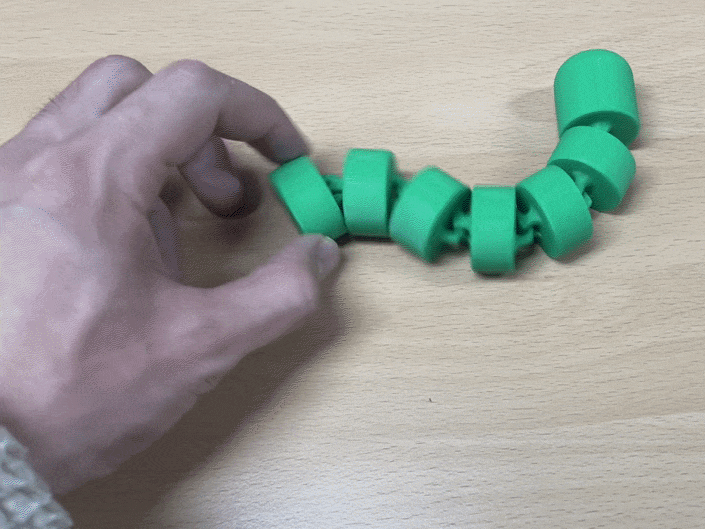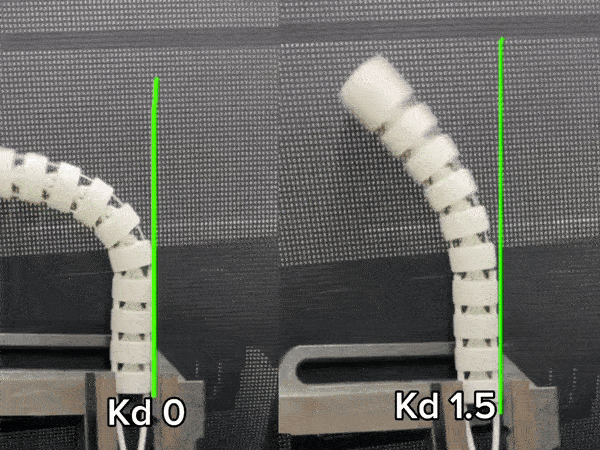Bachelor's Thesis
Seoul, Korea
Sponsored by Korea University Center for Teaching and LearningWhy

An endoscope's sharp, rigid tip can scratch or puncture organs, and limited control flexibility leads to common problems in endoscopy, like looping or the walking-stick phenomenon. Doctors often spend about 70% of surgery time navigating the S-shaped sigmoid colon, which is exhausting and fraught with concerns.
To mitigate this, I devised a method to straighten the colon by inflating a soft robot (a double-layer overtube), forming a guiding tube. This allows the endoscope to pass through safely and quickly.
Concept

(1) The Continuum Insertion Device (CID) and the Double-Layer Soft Robot are combined to facilitate entry into the intestine.
(2) The double-layered soft tube, combined with the CID, is
inserted through an S-shaped colon.
(3) Air is supplied to Channel 1 to inflate the anchoring ring. This separates the CID and the double-layered soft tube and simultaneously fixes the double-layered soft tube to the colon.
(4) The CID is removed from the intestine.
(5) The thread is extracted.
(6) Air is supplied to Channel 2 to inflate the double-layered soft tube, expanding the intestine.
(7) The conventional endoscope is then inserted
Figure of a Continuum Insertion Device (CID)
(a) 3D CAD representation of a CID
(b) Intersection of Two Loops in the Joint of a Continuum Insertion Device
(c) 3D Printer Slicer Program Display of a Continuum Insertion Device, Highlighting the absence of support structures
Figure of a Double-Layer Soft Tube with multi-channel air path
(1) The thread is passed through the hole once upwards and once downwards.
(2) Pull the thread from both ends, causing the tube to contract.
(3) The thread is pulled to its maximum extent, rendering the tube compact and slim.
(a) Blueprint for the Double-Layered Soft Tube
(b) Separated Airway Paths for two channels
Development
The Continuum Insertion Device (CID) is produced using a 3D printer in a single print, eliminating the need for assembly. It exhibits remarkable flexibility and curvature, well-suited for the colon environment. It implemented a tendon sheath to connect a CID with a DC motor for a controllability using master slave mechanism. Control was achieved using an STM32 NUCLEO-G431KB microcontroller board, enabling PID control. PID tuning was conducted by observing the CID's movement, accounting for the friction in the tendon sheath. The parameters (Kp, Kd, Ki) were set to (2.0, 1.0, 0.25), yielding optimal system performance.
The Double-Layer Soft Tube is made from polyethylene (PE), a material compatible with human organs, and easily fabricated using a heat sealer. Featuring unique holes, a thread keeps the robot flat, enabling it to inflate only upon user activation.

(a) Conventional endoscope (top), 15mm diameter CID (middle), 30mm diameter CID (bottom)
(b) Tip and anchoring ring of the double-layered soft tube
(c) Drawing the blueprint on vinyl for the double-layered soft tube fabrication
(d) Soft tube with thread inserted
(e) The overlapped soft tube made thin by pulling the thread from both sides
(f) The double-layered soft tube combined with the CID shows its ability to bend according to the curvature of the CID without any issues
(g) The double-layered soft tube attached to the front part of the CID with tape
Result

(a) Colon simulator before the insertion of the CID
(b) Colon simulator after the double-layered soft tube has been expanded




















Comments